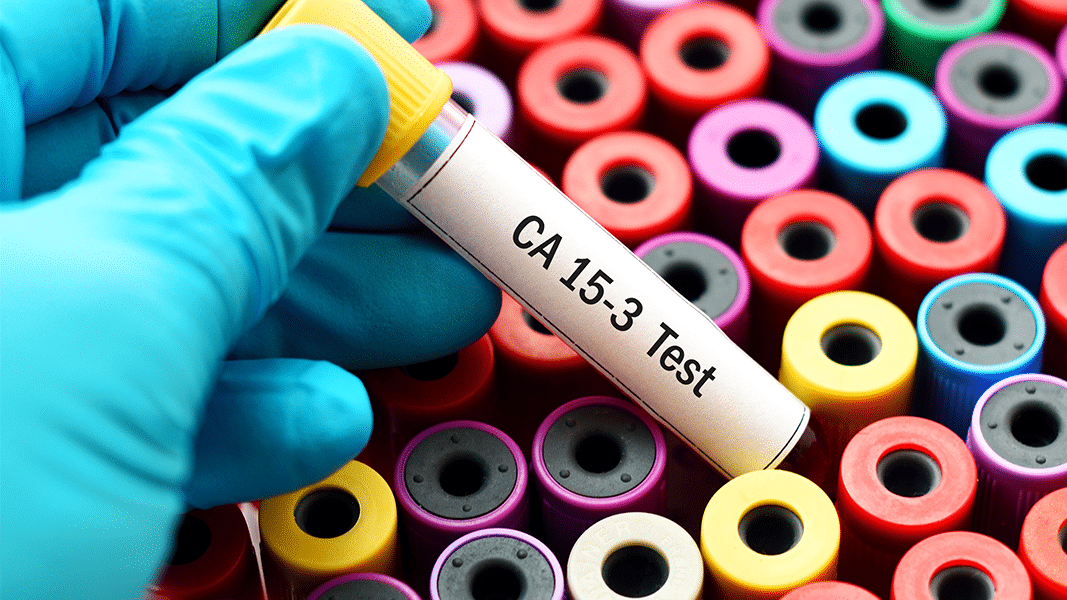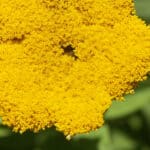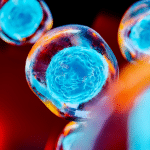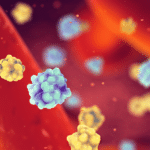It’s no secret that many cancer patients are using cannabis to help manage pain, fatigue, nausea, and other side effects of chemotherapy. Less well known is the fact that extensive preclinical research shows that plant cannabinoids — most notably, tetrahydrocannabinol (THC) and cannabidiol (CBD) – produce antitumor responses in various animal models of cancer.
The vast majority of this preclinical research has examined the anticancer activity of pure compounds, mainly THC isolates. But medical cannabis patients aren’t using pure, single-molecule THC to battle cancer. Instead, they are consuming whole plant cannabis oil extracts that include hundreds of compounds, many of which also have therapeutic properties. These artisanal cannabis oil preparations are available in licensed dispensaries in states where medical cannabis is legal and elsewhere via the unregulated black market.
Thus far, however, few rigorous studies have analyzed the effects of whole plant cannabis extracts. So a team of Spanish researchers, led by Cristina Sanchez at Complutense University in Madrid, decided to compare the efficacy of pure THC isolates and THC-rich oil extracts in a series of preclinical experiments that focused on breast cancer. (The oil extracts were provided by Aunt Zelda’s, a California-based medical cannabis producer.) The researchers also investigated the effects of pure THC and an artisanal THC-rich oil formulation when each was combined with standard chemotherapy drugs.
Their findings were reported in a 2018 article – “Appraising the ‘Entourage Effect’: Antitumor action of a pure cannabinoid versus a botanical drug preparation in preclinical models of breast cancer” – which was published in the journal Biochemical Pharmacology. The phrase “entourage effect” in this context refers to the full-spectrum synergistic interplay between numerous cannabis compounds – cannabinoids, terpenes, and flavonoids – that impart a therapeutic impact that’s greater than the sum of the plant’s individual components.
Spoiler alert: Both THC and the artisanal THC-rich oil were shown to have antitumoral properties, but the oil worked better than the THC isolate for three different breast cancer subtypes.
Tricky to Treat
It is estimated that one in eight women will develop breast cancer. Breast cancer is tricky to treat because there are few biomarkers that signal when someone has the disease, and many patients show or develop resistance to current therapies. Moreover, several specific types of breast cancer respond poorly to modern treatment. These difficulties underscore the importance of exploring new treatments for breast cancer.
Two biomarkers frequently used to diagnose breast cancer are hormonal receptors (the estrogen receptor and progesterone receptor) and the HER2 oncogene (a gene which can transform a normal cell into a tumor cell). But a more aggressive malignancy, known as “triple-negative breast cancer,” doesn’t express hormonal receptors or the HER2 oncogene. No targeted therapy exists for triple-negative breast cancer, so patients are treated with harsh chemotherapies that indiscriminately kill proliferating cells, whether cancerous or not.
These three types of cancer – hormone-sensitive, HER2, and triple-negative – were used as models for “Appraising the entourage effect.”
In all models of breast cancer studied, in vitro as well as in vivo, the whole plant extract was significantly more effective at producing anticancer effects than single-molecule THC. These results were largely consistent for type of cancer and type of model. Researchers tested the compounds in cell cultures (petri dishes) and in rodent models (mice).
THC & Hormone-Sensitive Breast Cancer
In the case of hormone-sensitive breast cancer cells, whole plant extract was found to be 15-25% more potent than THC alone. In live-animal models single molecule THC exhibited no significant antitumor response, unlike the whole plant extract, which had a pronounced antitumor effect. Testing on lab animals is a necessary step towards establishing the efficacy of a specific clinical treatment.
When the cannabinoid preparations were added to tamoxifen, a standard chemotherapy drug, in a cell plate, the combined therapy was about 20-25% more effective than chemotherapy alone. But these results were not replicated in live-animal trials. Importantly, the cannabinoids also did not negatively impact the efficacy of the chemotherapy. This suggests that at the very least using cannabis as an add-on treatment to deal with common side effects of chemotherapy, like nausea and appetite loss, won’t impede chemotherapy’s ability to destroy cancer cells.
In hormone-sensitive breast cancer, it appears that THC produces effects via interaction with the CB2 cannabinoid receptor. CB2 receptor activation has received significant attention because of its potential to treat diseases while avoiding the “high” mediated by the CB1 cannabinoid receptor, which THC also activates. When THC binds to CB1, it causes the swimmy-headed feelings of intoxication associated with cannabis consumption.
THC & HER2-Positive Breast Cancer
Whole plant extract was found to be significantly more potent than THC for HER2-positive breast cancer cells. Both single-molecule THC and whole plant extract showed antitumor effects when the experiment was replicated in mice. Additionally, both THC and the whole plant extract amplified the anticancer effects of lapatinib, the standard chemotherapy drug for HER2 breast cancer.
As with hormone-sensitive breast cancer, THC’s antitumoral effect in HER2-positive breast cancer experiments was shown to be mediated by the CB2 cannabinoid receptor. Published in the Proceedings of the National Academy of Science, a subsequent report by Cristina Sanchez and other Spanish scientists noted that HER2 and CB2 receptors are often found in the same exact place on cells.
CB2 actually conjoins with HER2 – forming what is called a dimer – and this dimerization is associated with poor treatment outcome for breast cancer. The PNAS report shed new light on THC’s anticancer mechanism of action: When THC binds to the CB2 receptor, it breaks up the CB2–HER2 dimer, triggering a chain reaction of signals that culminates in tumor regression.
THC & Triple-Negative Breast Cancer
Triple-negative, the breast cancer subtype with the worst prognosis, does not generally respond well to chemotherapy. But the Spanish group found that THC and THC-rich cannabis oil both offer some hope in improving treatment outcomes for this highly aggressive cancer. Again, the whole plant extract was found to be more effective than THC alone in decreasing the viability of cancer cells in vitro as well as in mouse model studies.
There are several other examples where a combination of plant cannabinoids and standard chemotherapy agents have produced a heightened antitumoral response that exceeded the potency of either therapy alone. A phase 2 clinical trial tested the strength of Sativex, an equal THC and CBD mixture, combined with temozolomide, the “gold-standard” chemo for brain cancer, and the results were positive.
Cancer patients are often treated with several single-compound drugs in an effort to create a treatment that can hit multiple targets. “Although current medicine is mostly based on the use of pure compounds that have single targets,” the Spanish scientists write, “it is increasingly obvious that for diseases as complex as cancer, multi-target approaches could conceivably be more effective.”
The results of the Spanish study, along with compelling data from other researchers, suggest a promising future for whole plant cannabis oil extracts and multitarget cancer therapies. But the Western medical system and its typical drug development procedures are not conducive to the approval of complex botanical preparations as multitarget medicaments – in part because elucidating a precise mechanism of action when numerous compounds are involved is much more difficult than studying a single-molecule pharmaceutical that’s geared toward a single, primary outcome.
The Takeaway
The fact that both the THC isolate and the whole plant cannabis extract were shown to be effective at reducing tumor viability is truly groundbreaking and should be an impetus for advancing the development of nontoxic, cannabinoid-based treatments for breast cancer.
Cannabinoid therapies are particularly promising for tumor-producing cancers given that “no overtly cannabis-resistant tumors have been described so far,” according to the Spanish researchers. “Considering how different cancer subtypes are, and the fact that the viability of non-transformed cells is not affected by cannabinoids at the concentrations they kill tumor cells, it is tempting to speculate that these compounds tackle essential, as yet unidentified, cellular functions that all cancer cells share, and that are absent in their non-cancerous counterparts.”
The Spanish breast cancer study underscores the importance of the entourage effect by demonstrating that full spectrum artisanal cannabis oil extract with numerous components is more effective than pure THC.* “[A]lthough the pharmacology of cannabis drug preparation extracts is obviously more complex to study,” the researchers acknowledge, “this therapeutic approach has the potential to produce better therapeutic responses than pure cannabinoids.”
The Spanish scientists emphasize that the whole plant cannabis drug preparation “did not, in any case, diminish the antitumor efficacy of any of the standard treatments.” That’s good news for cancer patients who use cannabis to manage the adverse side effects of chemo. Cannabis is very likely a safe add-on therapy for treating pain and nausea and for appetite stimulation. And it may also increase the efficacy of standard chemotherapy treatments, which means that chemo could be more effective – requiring lower and less toxic doses – when used in combination with cannabis.
Alex Andia, who holds his PhD in Chemistry, teaches at the City University of New York – City College. He is also the brains behind Chemical Makeup, a non-profit dedicated to promoting the queer voice in science. © Copyright, Project CBD. May not be reprinted without permission.
Footnote
* An interesting finding from the Spanish breast cancer study pertains to the not fully understood role of terpenes, the aromatic compounds that give cannabis its distinctive smell. The scientists created a “terpene cocktail” composed of the five most prominent terpenes in the full-spectrum cannabis oil extract: beta-caryophyllene, alpha-humulene, nerolidol, linalool, and beta-pinene. When added to the THC isolate, however, this terpene cocktail failed to increase the antitumoral efficacy of the single-molecule cannabinoid. This could mean that mixing a few terpenes with pure THC does not adequately recreate the qualities of a full-spectrum cannabis oil extract. Or it could be that other compounds in the oil extract are responsible for enhancing THC’s anticancer impact. The authors note that the whole plant cannabis oil extract used in the study also contained measurable amounts of cannabigerol (CBG) and tetrahydrocannabinolic acid (THCA – the ‘raw’ form of THC that won’t get you high). CBG has demonstrated effectiveness against colon cancer in preclinical models, and THCA is known to interact with a PPAR (nuclear) receptor that mediates apoptosis (cell death) in cancer cell lines. A combination of all these compounds may be required to achieve the antitumoral response observed in the Spanish breast cancer study.
References
- Blasco-Benito S, Moreno E, Seijo-Vila M, Tundidor I, Andradas C, Caffarel MM, Caro-Villalobos M, Urigüen L, Diez-Alarcia R, Moreno-Bueno G, Hernández L, Manso L, Homar-Ruano P, McCormick PJ, Bibic L, Bernadó-Morales C, Arribas J, Canals M, Casadó V, Canela EI, Guzmán M, Pérez-Gómez E, Sánchez C. Therapeutic targeting of HER2–CB2R heteromers in HER2-positive breast cancer. Proc Natl Acad Sci U S A. 2019 Feb 26;116(9):3863-3872. doi: 10.1073/pnas.1815034116.
- Blasco-Benito, S.; Seijo-Vila, M.; Caro-Villalobos, M.; Tundidor, I.; Andradas, C.; García-Taboada, E.; Wade, J.; Smith, S.; Guzmán, M.; Pérez-Gómez, E.; Gordon, M.; Sánchez, C. Appraising the “Entourage Effect”: Antitumor Action of a Pure Cannabinoid versus a Botanical Drug Preparation in Preclinical Models of Breast Cancer. Biochem. Pharma. 2018, 157, 285.
- Bray, F.; Ferlay, J.; Soerjomataram, I.; Siegel, R. L.; Torre, L. A.; Jemal, A. Cancer Statistics, 2018. Ca-Cancer J. Clin. 2018, 68, 394.
- Caffarel, M. M.; Andradas, E.; Perez-Gomez, M.; Guzmán, M.; Sánchez, C. Cannabinoids: a New Hope for Breast Cancer Therapy? Cancer Treat. Rev. 2012, 38, 911.
- Campos, A. C.; Fogaca, M. V.; Sacarante, F. F.; Joca, S. R. L.; Sales, A. J.; Gomes, F. V.; Sonego, A. B.; Rodrigues, N. S.; Galve-Roperh, I.; Guimaraes, F. S. Plastic and Neuroprotective Mechanisms Involved in the Therapeutic Effects of Cannabidiol in Psychiatric Disorders. Front. Pharmacol. 2017, 8, 269.
- ElSohly, M.; Waseem, G. Handbook of Cannabis, Oxford University Press, Oxford, United Kingdom, 2014, pp. 3.
- Harbeck, N.; Gnant, M. Breast Cancer, Lancet, 2017, 389, 1134.14
- Ligresti, A.; De Petrocellis, L.; Di Marzo, V. From Phytocannabinoids to Cannabinoid Receptors and Endocannabinoids: Pleiotropic Physiological and Pathological Roles Through Complex Pharmacology. Physiol. Rev. 2016, 96, 1593.
- Ligresti, A.; Moriello, A. S. K.; Starowicz, I.; Matias, S. P.; De Petrocellis, L.; Laezza, C.; Portella, G.; Bifulco, M.; Di Marzo, V. Antitumor Activity of Plant Cannabinoids with Emphasis of the Effect of Cannabidiol on Human Breast Carcinoma. J. Pharmacol. Exp. Ther. 2006, 318, 1375.
- McPartland, J. M.; Russo, E. B. Handbook of Cannabis, Oxford University Press, Oxford, United Kingdom, 2014, pp. 280.
- Russnes, H. G.; Lingjaerde, O. C.; Borresen-Dale, A. L.; Caldas, C. Breast Cancer Molecular Stratification: From Intrinsic Subtypes to Integrative Clusters. Am. J. Pathol. 2017, 187, 2152
- Russo, E. B. Beyond Cannabis: Plants and the Endocannabinoid System. Trends in Pharmcol. Sci. 2016, 37, 594.
- Russo, E. B. Taming THC: Potential Cannabis Synergy and Phytocannabinoid-Terpenoid Entourage Effect. Br. J. Pharmacol. 2011, 163, 1344.
- Schwarz, R.; Ramer, R.; Hinz, B. Targeting the Endocannabinoid System as a Potential Antticancer Approach. Drug Metab. Rev. 2018, 50, 26.
- Siegel, R. L.; Miller, K. D.; Jemal, A. Cancer Statistics, 2018. Ca-Cancer J. Clin. 2018, 68, 7.
- Velasco, G.; Sánchez, C.; Guzmán, M. Towards the Use of Cannabinoids as Antitumor Agents. Nat. Rev. Cancer 2012, 12, 436.
- World Health Organization. Global Health Observatory. Geneva: World Health Organization; 2018. Who.int/gho/database/en/.







